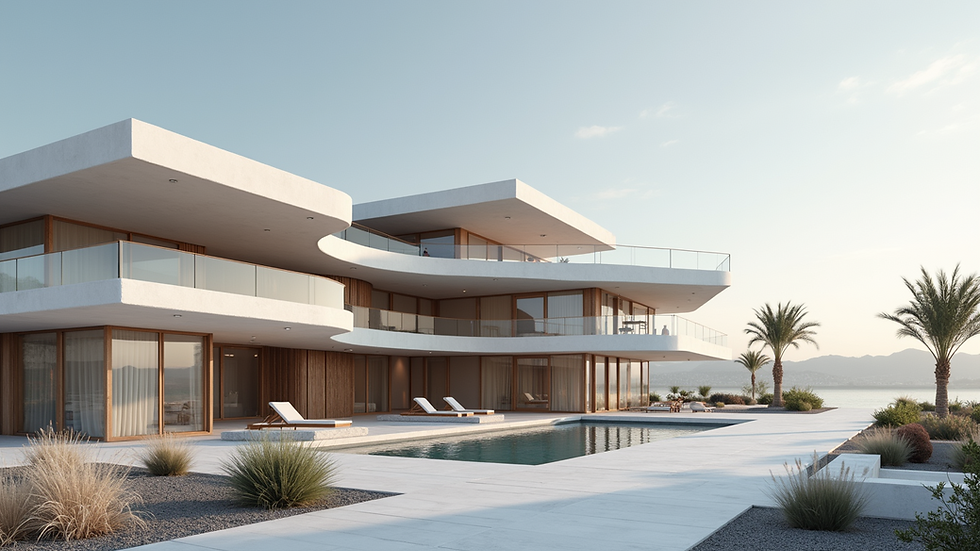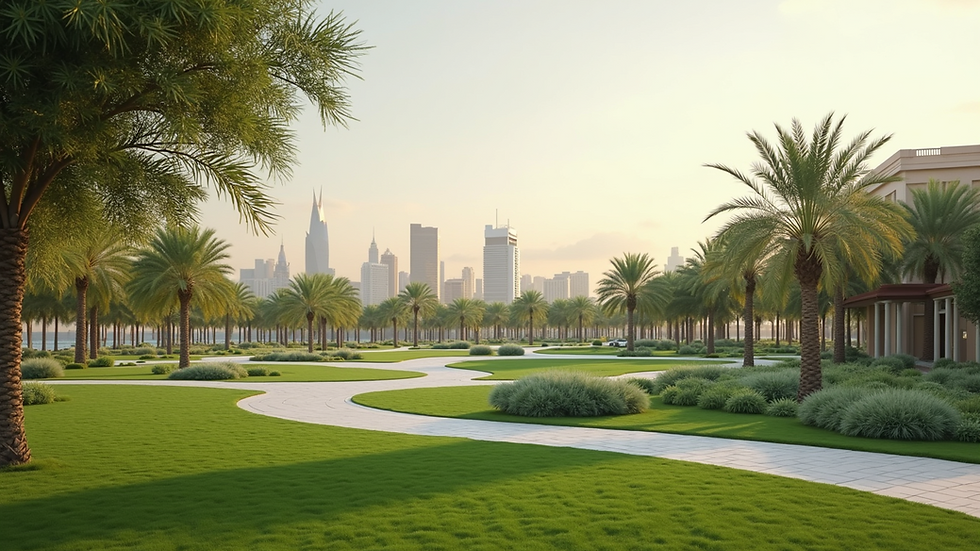Architectural Innovation in Saudi Arabia: Embracing the New Revolution
- Ahmad

- Sep 28
- 3 min read
Saudi Arabia is experiencing a thrilling transformation in its architectural scene. This change is driven by a vision that blends our rich traditions with modern advancements. As a Saudi architect, I have seen firsthand how our cities and communities are being reshaped. This post explores the revolution in architecture within Saudi Arabia, showcasing innovative designs, eco-friendly practices, and the cultural importance of these changes.
The Vision 2030 Initiative
At the heart of this architectural transformation is the Vision 2030 initiative. Launched by the Saudi government, this bold plan aims to diversify the economy and reduce our reliance on oil. One of the initiative's main objectives is to improve the quality of life for citizens while attracting tourism and investment.
In architecture, this vision emphasizes creating urban spaces that reflect our cultural heritage while incorporating advanced technology. We see natural elements, sustainable building practices, and cultural preservation becoming central themes in this evolution.
Sustainable Architecture: A New Paradigm
Sustainability has emerged as a critical focus in Saudi architecture. Architects and developers are prioritizing environmentally friendly designs to meet the demands of our challenging climate.
Techniques such as passive design and natural shading are becoming standard practices. These help reduce energy usage by up to 30% in some projects. Innovative strategies, like utilizing local materials and implementing renewable solar energy sources, are becoming commonplace.
Additionally, integrating green spaces and community gardens into urban designs improves residents' quality of life, encouraging outdoor interaction and community well-being.
Iconic Projects Shaping the Future
Several remarkable projects are redefining architectural norms in Saudi Arabia. One standout is NEOM, a groundbreaking $500 billion mega-city set to change urban living entirely. NEOM aims to operate solely on renewable energy and prioritize technological advancements and sustainable practices.
Another significant endeavor is the Red Sea Project, which plans to construct a luxurious tourism hub along the western coast. This initiative focuses on protecting the area's natural beauty and cultural heritage, providing both visitors and locals with world-class amenities.

Cultural Heritage and Modern Design
As we embrace contemporary styles, it's essential to respect and maintain Saudi Arabia's rich cultural legacy. Architects are blending traditional elements into modern designs, producing a unique architectural identity.
For example, incorporating mashrabiya (decorative wooden screens) in modern buildings not only offers shade and privacy but also connects residents to their heritage. This harmonious blending is evident in projects across the nation, from new residential areas to public plazas.
The King Abdulaziz Center for World Culture in Dhahran showcases this blend perfectly. Its design draws inspiration from traditional Arabian architecture while utilizing modern construction techniques, resulting in a functional and culturally significant space.
The Role of Technology in Architecture
Technology is drastically altering how architects design and build in Saudi Arabia. The adoption of Building Information Modeling (BIM) enhances planning efficiency and collaboration, ultimately cutting costs and timelines by up to 15%.
Moreover, modern construction techniques like 3D printing are allowing for faster and more sustainable building processes. This innovation not only boosts productivity but also inspires creativity in design.
Smart buildings are on the rise, featuring systems for automated lighting, temperature control, and security. These advancements lead to energy savings and elevate the overall experience for users in these spaces.
Community-Centric Design
As urbanization increases, the importance of creating community-centered designs grows. Architects are focusing on spaces that encourage social interaction and foster a sense of belonging.
Developments combining residential and commercial areas are becoming more common, promoting walkability and an accessible lifestyle. Additionally, public spaces like parks and plazas are vital for strengthening community ties and enhancing the quality of life for residents.
Challenges and Opportunities
Despite the excitement surrounding architectural advancements, challenges persist. Rapid urbanization, population growth, and resource scarcity pose considerable obstacles for architects and planners.
However, these challenges also create opportunities for innovative solutions. By embracing sustainable methods and leveraging technology, architects can design resilient structures that respond to an evolving society.
Collaborative efforts among government bodies, private developers, and local communities are crucial to addressing these issues. Unity will ensure the architectural revolution in Saudi Arabia is inclusive and beneficial for everyone.
Looking Ahead
The architectural evolution in Saudi Arabia showcases our commitment to innovation, sustainability, and cultural preservation. As we adopt new technologies and design philosophies, we can create urban spaces that honor our heritage and meet the expectations of future generations.
Architects play an essential role in shaping our built environment and enhancing life quality in our communities. By focusing on eco-friendliness, community engagement, and cultural identity, we can contribute to a brighter future for Saudi Arabia.
This journey is just beginning, and the possibilities are limitless. Together, we can establish a legacy of architectural excellence that inspires and uplifts our nation for years to come.









Comments